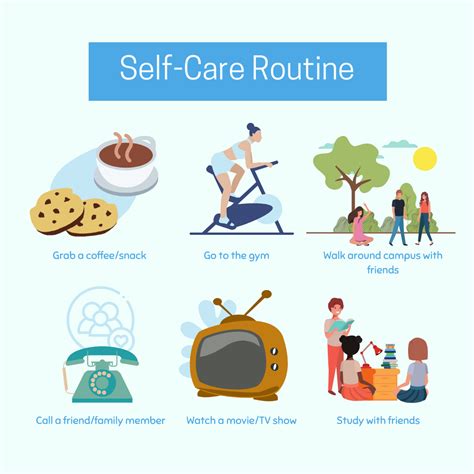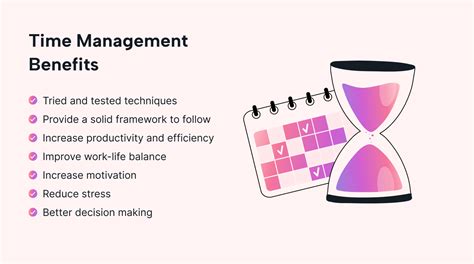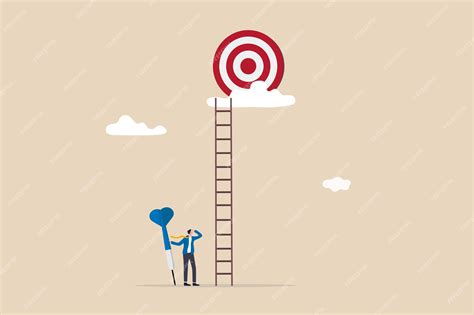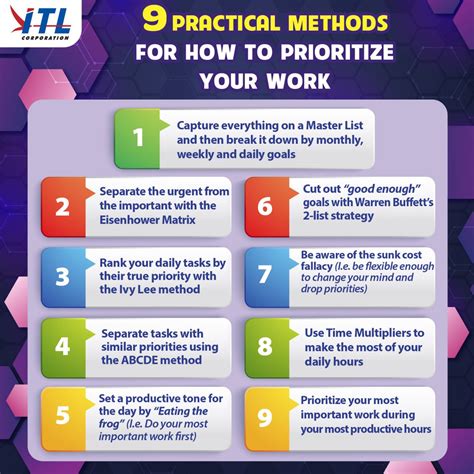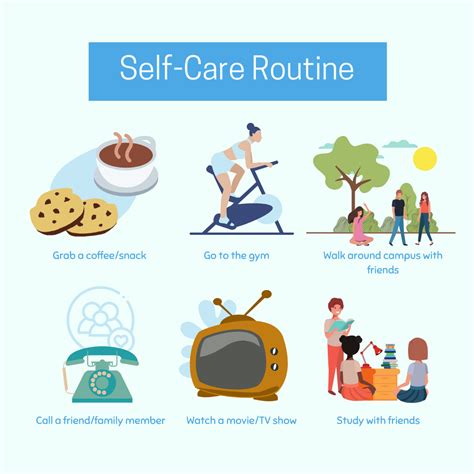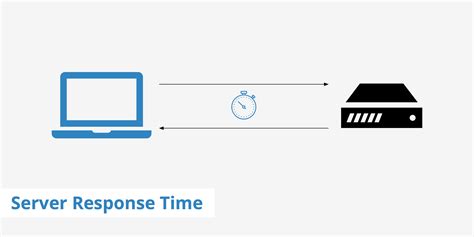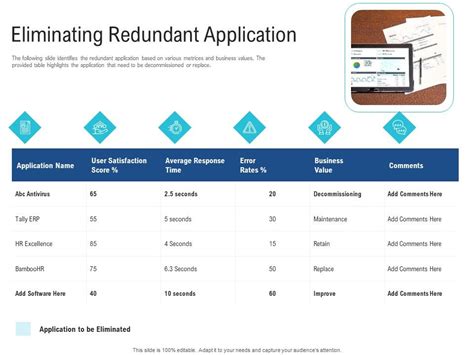As we navigate through the hustle and bustle of our daily lives, time often feels like an elusive and intangible concept. We find ourselves constantly juggling various tasks, deadlines, and responsibilities, striving to make the most of every precious minute. To truly succeed in this fast-paced world, it is essential to cultivate effective time management skills that will enable us to stay focused, organized, and productive.
Seizing Control of Your Schedule:
One fundamental aspect of efficient time management is the ability to prioritize tasks based on their importance and urgency. By consciously evaluating the significance of each item on your to-do list, you can better allocate your time and resources in a manner that aligns with your goals and objectives. Develop the habit of setting clear and achievable goals, and break them down into smaller, actionable steps. This practice not only enhances your overall productivity but also boosts your motivation as you witness progress towards your larger aspirations.
The Power of Discipline and Focus:
In today's digital age, distractions are ubiquitous and seemingly never-ending. To counteract this constant influx of stimuli, it is crucial to practice discipline and strengthen your ability to focus. Allocate specific periods of time solely for work or study, free from any distractions or interruptions. This may require temporarily disconnecting from social media platforms, turning off notifications, or even finding a quiet space away from potential disruptions. Additionally, consider incorporating techniques such as Pomodoro or time-blocking to maximize your concentration and efficiency during dedicated work sessions.
The Necessity of Rest and Self-Care:
While it may seem counterintuitive, ensuring adequate rest and self-care is an indispensable component of effective time management. Neglecting your physical and mental well-being can lead to burnout, decreased productivity, and a general sense of being overwhelmed. Make it a priority to set aside time for relaxation, exercise, and rejuvenation. Engaging in activities that promote relaxation and stress reduction will not only enhance your overall well-being but also provide you with the energy and focus necessary to tackle your daily tasks with renewed vigor.
In conclusion, mastering the art of time management is a lifelong journey that requires dedication, discipline, and self-awareness. By prioritizing tasks, cultivating focus, and nourishing your mind and body, you can unlock a new level of productivity and fulfillment. Remember, time is a finite resource, and it is up to you to make the most of it!
Prioritize Your Tasks
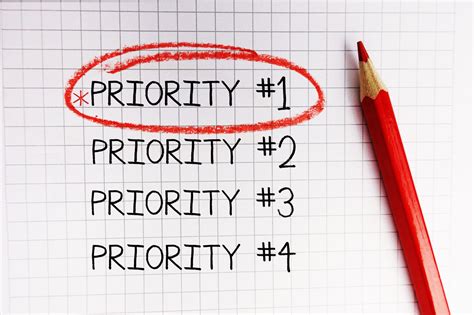
In order to make the most out of your time and achieve maximum productivity, it is crucial to effectively prioritize your tasks. Prioritization involves identifying the most important and urgent tasks and allocating your time and resources accordingly. By focusing on the tasks that are of utmost priority, you can ensure that you are utilizing your time efficiently and working towards your goals.
One effective method of prioritizing your tasks is to create a to-do list. This list should include all the tasks that need to be completed, along with their deadlines or due dates. Once you have compiled your to-do list, you can then determine the priority level of each task based on its importance and urgency.
| Important and Urgent | Important but not Urgent | Urgent but not Important | Not Important and not Urgent |
| Tasks that require immediate attention and have significant impact on your goals or responsibilities. These tasks should be completed as soon as possible. | Tasks that contribute to your long-term goals or priorities but do not require immediate attention. Schedule dedicated time for these tasks. | Tasks that have urgent deadlines but do not contribute significantly to your goals. Delegate or minimize the time spent on these tasks. | Tasks that have low priority and should be deprioritized or eliminated if possible. These tasks can be delegated or postponed. |
Once you have identified the priority level of each task, you can organize your schedule accordingly. Focus on completing the important and urgent tasks first, followed by the important but not urgent tasks. Delegate or minimize the time spent on tasks that are urgent but not important. Lastly, deprioritize or eliminate tasks that are not important or urgent, freeing up valuable time for more crucial tasks.
By prioritizing your tasks effectively, you can optimize your time management skills and ensure that you are working on what matters most. This will not only increase your productivity, but also reduce stress and help you achieve your goals more efficiently.
Setting Attainable Objectives
One key aspect of effective time management is the ability to set achievable goals. By establishing clear and realistic objectives, individuals can work towards managing their time more efficiently and ultimately achieve success in their tasks. Setting attainable goals allows for greater focus, enabling individuals to prioritize their efforts and allocate time effectively.
Achievable goals are those that are within one's capabilities and resources. They should be challenging enough to provide motivation and drive, yet realistic enough to be achieved within a specific timeframe. These goals should align with one's overall objectives and be broken down into smaller, more manageable tasks.
| Benefits of setting achievable goals: |
| 1. Enhanced productivity: Clear goals provide a sense of direction, helping individuals stay focused and engaged in their tasks. |
| 2. Improved time allocation: By setting objectives that are attainable, individuals can allocate their time more effectively, ensuring they devote sufficient time to each task. |
| 3. Motivation and satisfaction: Achieving realistic goals boosts motivation and provides a sense of accomplishment, leading to increased satisfaction with one's progress. |
| 4. Better prioritization: By identifying achievable goals, individuals can prioritize their tasks based on importance and urgency, optimizing their time management strategies. |
It is important to note that setting attainable goals does not mean settling for mediocrity or complacency. Rather, it promotes a realistic and strategic approach to managing time and resources. By setting challenging but achievable objectives, individuals can experience increased productivity, motivation, and overall success in their endeavors.
Create an Effective Daily Schedule
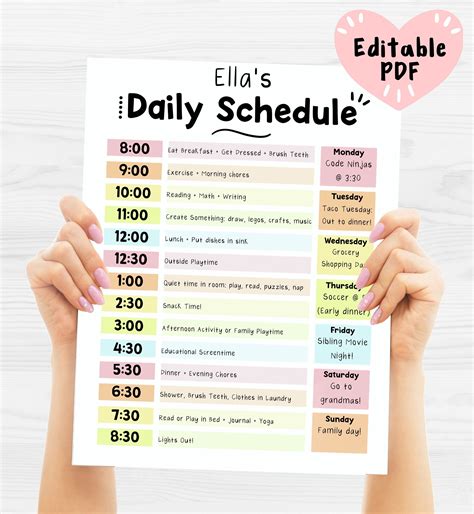
One essential aspect of optimizing your use of time is to establish a well-structured daily routine. By crafting a customized schedule tailored to your specific needs and preferences, you can enhance your productivity and make the most of each day.
Strategize: Begin by identifying your priorities and goals for the day. Consider both short-term tasks and long-term objectives, taking into account deadlines, commitments, and personal aspirations. This will enable you to allocate your time effectively and ensure that nothing important is overlooked.
Organize: Once you have a clear understanding of your priorities, it is crucial to organize your schedule accordingly. Determine the most suitable time slots for different activities based on their level of importance, urgency, and your energy levels throughout the day. Additionally, create blocks of uninterrupted time for focused work to maximize efficiency.
Time Blocking: Implementing a time blocking technique can be highly effective in managing your daily schedule. Designate designated periods for specific tasks or categories, such as administrative work, meetings, creative work, or personal activities. By allocating dedicated time slots, you can minimize distractions and maintain a more structured approach to your day.
Balance: While it is important to be productive and accomplish your tasks, it is equally essential to maintain a healthy work-life balance. Incorporate breaks, leisure activities, and self-care into your daily schedule to avoid burnout and promote overall well-being. Remember, being efficient with your time also means taking care of yourself.
Flexibility: Remember that a schedule should serve as a guide rather than a rigid set of rules. Allow for flexibility to accommodate unexpected events or changing priorities. By being adaptable and open to adjustments, you can navigate unforeseen circumstances without feeling overwhelmed or stressed.
Review and Reflect: Regularly review your daily schedule to assess its effectiveness and identify areas of improvement. Reflect on whether you are accomplishing your goals and if the allocated time slots are working optimally for you. Make necessary adjustments and refine your schedule accordingly to continually enhance your time management skills.
Creating a structured and personalized daily schedule is a proactive approach to effectively managing your time. By incorporating strategic planning, organization, and flexibility, you can optimize your daily routine and achieve greater productivity and satisfaction in both your personal and professional endeavors.
Avoiding Procrastination
One of the key strategies for effectively managing your time is to steer clear of procrastination - the act of postponing or delaying tasks. In order to optimize your productivity, it is important to develop habits and techniques that help you overcome the inclination to procrastinate.
Avoiding procrastination requires discipline, focus, and effective planning. It involves recognizing the tendency to put off tasks and taking proactive steps to tackle them head-on. By doing so, you can reduce stress, increase productivity, and achieve your goals more efficiently.
Avoiding procrastination begins with understanding the reasons behind your tendency to delay tasks. It could be due to fear of failure, lack of motivation, or feeling overwhelmed. Once you identify the underlying causes, you can work on addressing them and finding ways to stay focused and motivated.
Creating a structured schedule and setting clear deadlines for yourself can also aid in avoiding procrastination. Breaking down tasks into smaller, manageable chunks and prioritizing them based on importance and urgency can make them feel less overwhelming and more achievable. Regularly reviewing and revising your schedule can help you stay on track and ensure that you allocate sufficient time to each task.
Additionally, finding effective time management techniques that work for you can help combat procrastination. Some individuals find it helpful to use tools such as to-do lists, calendars, or digital productivity apps to stay organized and on top of their tasks. Others may benefit from using techniques like the Pomodoro Technique, which involves setting specific time intervals for working and taking breaks.
| Benefits of Avoiding Procrastination: |
|---|
| 1. Increased productivity |
| 2. Reduced stress levels |
| 3. Higher quality work |
| 4. Improved time management skills |
| 5. Greater sense of achievement and satisfaction |
Avoiding procrastination is a continuous process that requires self-discipline and self-awareness. By adopting effective strategies and making conscious efforts to overcome the urge to delay tasks, you can make the most of your time and achieve your goals more efficiently.
Master the Art of Delegating

Discover the power of entrusting tasks to others and unlock your true potential in managing your time effectively. Learn how to distribute workloads efficiently without compromising quality.
Minimize Distractions
One of the keys to effectively managing your time is to reduce or eliminate anything that can divert your attention and hinder your productivity. Being able to focus on the task at hand without being interrupted or sidetracked is crucial for efficient time management.
Distractions can come in various forms and may differ from person to person. They can include anything from external factors like noisy environments or constant interruptions from colleagues to internal factors like checking emails or social media notifications. Identifying and actively addressing these distractions can significantly improve your ability to stay focused and make the most of your time.
To eliminate distractions, it is important to create an environment that is conducive to concentration and productivity. This can involve finding a quiet and organized workspace, using noise-canceling headphones, or setting up boundaries with coworkers or family members to limit interruptions. Additionally, developing self-discipline and establishing boundaries for personal tasks and electronic devices can help minimize the temptation to engage in non-essential activities during work or study time.
Avoiding multitasking is another effective way to eliminate distractions. While it may seem like multitasking allows you to accomplish more in less time, research has shown that it actually reduces productivity and increases the likelihood of errors. Instead, focus on one task at a time, giving it your full attention and completing it before moving on to the next one. This approach ensures that you give each task the necessary concentration and produce higher-quality results.
By recognizing and actively working to eliminate distractions, you can enhance your ability to manage your time efficiently and optimize your productivity. Taking steps to create a focused and interruption-free environment, as well as avoiding multitasking, will allow you to make the most of your time and achieve your goals effectively.
Refresh with Short Breaks: Rejuvenate and Boost Productivity

Recharge your energy and enhance your productivity through the strategic inclusion of short breaks in your daily routine. These intervals of respite from your tasks can offer a well-deserved pause to rejuvenate your mind, restore your focus, and maintain an elevated level of efficiency in your work. By strategically incorporating these breaks into your schedule, you can optimize your time management and accomplish tasks with renewed vigor.
Benefits of Short Breaks:
| Effective Ways to Take Short Breaks:
|
Incorporating short breaks into your day not only offers physical and mental rejuvenation but also helps in maintaining a healthy work-life balance. By allocating specific time slots for breaks and adhering to them, you can prevent procrastination and stay on track with your tasks. Remember, taking short breaks is not a sign of laziness but a strategic approach to efficient time management.
Discover the power of revitalizing breaks and witness the positive impact they can have on your overall productivity and well-being. Give yourself permission to pause, refresh, and return to your tasks with increased focus, clarity, and motivation. Embrace the potential of short breaks as a valuable tool for optimal time management, allowing you to accomplish more while maintaining a sustainable pace.
Optimize Your Schedule with Time Management Tools
Enhance your productivity and maximize your time with the help of innovative time management tools. These resources can assist you in organizing your tasks, prioritizing your goals, and improving your overall efficiency.
- Task Management Apps: Utilize apps and software designed specifically for managing your tasks and activities. These applications offer features such as deadline reminders, task categorization, and progress tracking, ensuring that no important task slips through the cracks.
- Calendar Tools: Make use of digital calendars to schedule your appointments, meetings, and deadlines. These tools allow you to set reminders, create recurring events, and share your calendar with others, enabling seamless coordination and efficient time allocation.
- Time Tracking Software: Track your time usage and identify areas where you can optimize your productivity. Time tracking software enables you to monitor how much time you spend on different activities, helping you identify time-wasting habits and make necessary adjustments.
- Project Management Platforms: If you are working on complex projects with multiple team members, consider using project management platforms. These platforms offer features such as task assignment, progress tracking, and collaborative communication tools, which streamline project coordination and enhance efficiency.
- Focus and Pomodoro Timer Apps: Maintain focus and avoid distractions by utilizing focus and Pomodoro timer apps. These tools provide structured time intervals for work, followed by short breaks, allowing you to maintain concentration and prevent burnout.
By leveraging these time management tools, you can optimize your schedule, increase your productivity, and accomplish your tasks more efficiently. The key is to find the tools that suit your specific needs and embrace them as integral components of your time management strategy.
Assess and Examine Your Time Organization
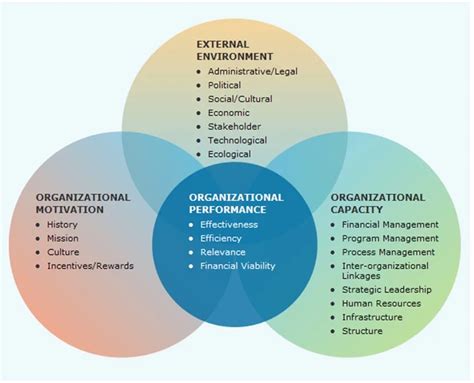
In order to optimize your utilization of time and enhance productivity, it is essential to regularly review and evaluate your time organization practices. The process of reviewing and evaluating your time management entails assessing the effectiveness of your current strategies, identifying areas for improvement, and creating a plan to enhance productivity and efficiency in managing your tasks and responsibilities.
Take Care of Yourself to Optimize Your Schedule
Discover the Power of Self-Care to Maximize Your Time
In today's fast-paced world, finding the perfect balance between work and personal life can feel like a constant struggle. However, incorporating self-care practices into your routine can be a game-changer when it comes to managing your time effectively and staying productive. Prioritizing your well-being not only enhances your physical and mental health but also allows you to approach tasks with renewed focus and efficiency.
Embrace Mindfulness for Enhanced Productivity
Creating a self-care routine doesn't always require elaborate activities or time-consuming rituals. Taking a few moments each day to practice mindfulness can work wonders for your time management skills. Engaging in activities such as meditation, deep breathing exercises, or even simply taking short breaks to clear your mind allows you to recharge and refocus. By incorporating these mindful practices into your daily routine, you'll find yourself better equipped to tackle your tasks with a clear and calm mind.
Nourish Your Body and Mind for Optimal Performance
Proper self-care involves prioritizing not only your mental well-being but also ensuring that your physical health is in top shape. Regular exercise, a nutritious diet, and sufficient sleep are key components that contribute to your overall productivity and time management. By fueling your body with nourishing foods and engaging in regular physical activity, you'll boost your energy levels and maintain the stamina needed to accomplish tasks efficiently.
Unplug and Recharge to Enhance Your Focus
In today's digital age, constant connectivity can be overwhelming and detrimental to effective time management. Taking regular breaks from electronic devices, such as smartphones and laptops, can significantly benefit your productivity levels. Use this time to engage in activities you enjoy, such as reading a book, practicing a hobby, or spending quality time with loved ones. By disconnecting from technology, you'll give your mind a chance to rejuvenate, which can lead to improved focus and productivity when you return to your tasks.
Establish Boundaries to Protect Your Time
Setting clear boundaries is an essential element of self-care and can greatly impact your time management. Learn to say "no" when necessary and prioritize your commitments. By understanding your limits and effectively communicating them, you'll avoid overextending yourself and ensure that you have ample time to devote to both personal and professional tasks.
To unlock your full potential and optimize your schedule, integrating self-care practices into your daily routine is key. By taking care of your physical, mental, and emotional well-being, you'll be able to approach tasks with a clear mind, increased energy levels, and enhanced focus. Remember, prioritizing yourself is not selfish but rather a necessary investment in achieving efficient time management.
FAQ
How can I improve my time management skills?
There are several ways you can improve your time management skills. Firstly, prioritize your tasks by creating a to-do list and identifying the most important ones. Secondly, break down your work into smaller, manageable tasks to avoid feeling overwhelmed. Thirdly, set realistic deadlines and create a schedule to allocate time for each task. Additionally, eliminate or minimize distractions such as social media or unnecessary meetings. Lastly, learn to delegate tasks and ask for help when needed.
What are some effective techniques for managing time efficiently?
There are several effective time management techniques you can try. One popular technique is the Pomodoro Technique, which involves working intensely for 25 minutes and then taking a short break. Another technique is the Eisenhower Matrix, where you categorize tasks based on their urgency and importance. Prioritizing tasks and focusing on one task at a time is another effective technique. Finally, setting specific goals and regularly reviewing your progress can help you stay on track.
How can I avoid procrastination and stay motivated?
To avoid procrastination and stay motivated, start by setting specific and achievable goals. Break down your goals into smaller tasks and set deadlines for each task. It's also helpful to identify your most productive hours and schedule important tasks during that time. Additionally, find ways to reward yourself after completing tasks to maintain motivation. If you find yourself procrastinating, try using techniques like the "two-minute rule" where you commit to working on a task for just two minutes to overcome the initial resistance.
Is it better to multitask or focus on one task at a time?
While multitasking may seem like a productive approach, research suggests that it is more efficient to focus on one task at a time. When you switch between tasks, your brain needs time to refocus and adjust, which can lead to decreased productivity. By focusing on one task at a time, you can give it your full attention and complete it more efficiently. Additionally, single-tasking allows for better concentration and a higher quality of work.
How can I manage my time effectively when there are multiple deadlines?
When faced with multiple deadlines, it's important to prioritize tasks. Start by identifying the most urgent and important deadlines and tackle those first. Break down larger tasks into smaller, manageable chunks and allocate specific time slots for each task. It may also be helpful to communicate with others involved in the deadlines to ensure everyone is on the same page. Be realistic about what you can accomplish within the given time frame and consider delegating tasks if necessary.
How can I improve my time management skills?
Improving time management skills can be done by following a few tips. First, create a to-do list or use a planner to prioritize tasks. This helps to stay organized and focused on important tasks. Second, break tasks into smaller, more manageable chunks. This makes it easier to accomplish tasks without feeling overwhelmed. Third, eliminate distractions, such as turning off notifications on your phone or closing unnecessary tabs on your computer. Finally, learn to delegate tasks when possible and say no to additional commitments that can drain your time.
What are some effective strategies for time management?
There are several strategies that can help in efficient time management. One such strategy is the Pomodoro Technique, which involves working for 25 minutes and then taking a 5-minute break. This helps to maintain focus and productivity. Another effective strategy is prioritizing tasks based on their importance and urgency. This ensures that important tasks are completed first. Time blocking is another valuable strategy where specific time periods are dedicated to certain tasks or activities. This helps to create a more structured schedule. Additionally, using productivity tools and setting realistic deadlines can greatly aid in managing time effectively.


